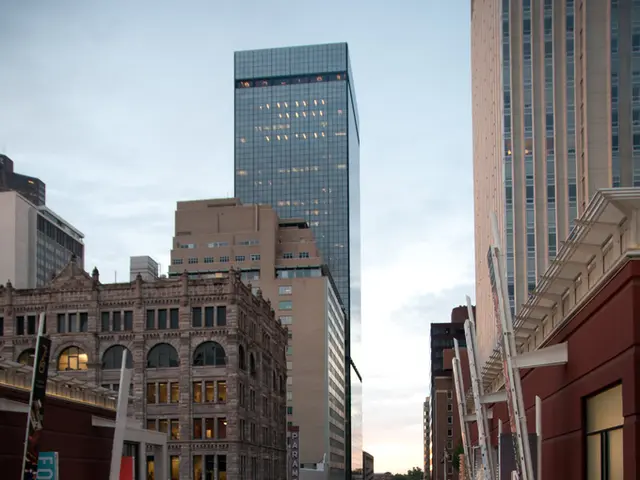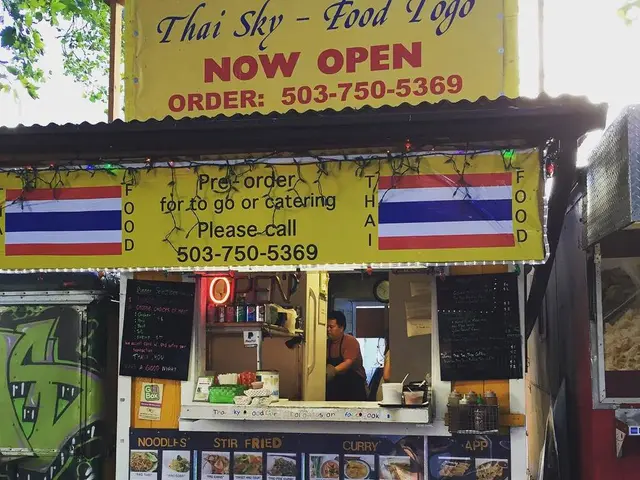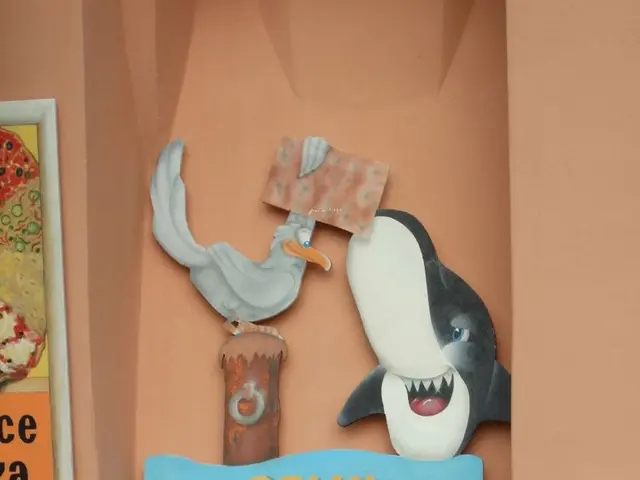Customs Continue Thriving in the Erzgebirge Region: Their Current Locations Revealed
Ore Mountain Crafts: Preserving Tradition Amid Changing Times
(First Published on May 28, 2025, 4:00 AM by Jessica Ramczik, KULTUR)
Since the 18th century, the Ore Mountains have been a bastion of craftsmanship and tradition in Germany. With its mix of historic workshops, mining customs, and hut evenings, the region has maintained a unique way of life long after the Christmas season ends. In towns such as Seiffen, Olbernhau, or Annaberg-Buchholz, visitors encounter a dizzying array of symbols, from angels and miners to the enigmatic Schwibbogen.
Over the centuries, artisan craft in the Ore Mountains has evolved significantly, mirroring the region's economic, political, and societal transformations.
Crafting a Legacy: From Economic Necessity to Artistic Expressions
The decline of mining in the 18th century left many in the Ore Mountains region economically vulnerable. To compensate, residents turned to self-organized production activities, such as carving and painting wooden figures. This cottage industry not only provided new sources of income but also gave shape to entire villages' daily lives. Gender roles were clearly defined: men primarily worked on the woodturning and carving, while women painted and children prepared the pieces for sale.
As the 19th century progressed, specialized workshops and manufactories arose, and industrial production emerged. Artisan craft had to adapt multiple times, with a renewed focus on craftsmanship quality and design innovation. During the GDR era, artisan craft was organized by the state and promoted as both a state asset and an export product. Some of the family businesses that continue to thrive today originated during that time.
Nowadays, craft continues to be as much a cultural practice as an income source. It serves as a testament to the region's storied past while standing as an expression of historical craftsmanship and a bearer of regional symbolism. Yet, artisan craft faces challenges, including skilled labor shortages, price competition, and design stagnation.
Video: The Forge's Return
Marcel Weißer resurrects the blacksmith's forge in Mildenau according to historical models, creating a monument to Ore Mountain craftsmanship.
Angels, Miners, and the Schwibbogen
The angel and the miner, common sights during the Ore Mountain Christmas season, are characterized by their connection to the region's mining heritage and its religious influence. The miner represents the region's economic and religious history, while the angel symbolizes light and religious connection. Both figures have become an integral part of Christmas in the Ore Mountains.
The Schwibbogen, a symbol of Ore Mountain Christmas, was originally functional and symbolic in its design, inspired by mining support structures. The first Schwibbogen was made of metal in 1740 but evolved into a popular window decoration in the early 20th century.
Nazi Influence and Modern Revival
During the Nazi era, Erzgebirge folk art, including the Schwibbogen, was manipulated for ideological purposes. Catholic motifs were replaced with ostensibly "purely German" or pagan symbols. However, artisans continued to create traditional, Christian-inspired motifs, and the Schwibbogen's modern manifestations have since distanced themselves from these ideological connotations.
Incense Men, Candles, and Other Traditional Figures
The Räuchermännchen is a staple of Ore Mountain folk art. These hollow wooden figures were originally designed as candleholders and only gained their characteristic incense functionality in the 19th century. They were typically made in the village of Neudorf bei Sehmatal. Contemporary workshops in Oderan and Seiffen create both classic and modern variations of the Räuchermännchen.
Turned animals, characteristic of the Seiffen toy tradition, are another key part of Ore Mountain craftsmanship. Carved from a wooden ring, multiple identical animal figures are cut using a specific turning process and refined by hand.
Christmas Pyramids and Mountains
The Christmas pyramid, with roots dating back to the 18th century, quickly transformed from simple candle holders to elaborate, moving displays featuring scenes from the Christmas story, mining life, and village communities. These geometric structures could be found in homes, clubs, and churches, setting a festive atmosphere during the holiday season. Mountain parades, a remnant of processions that took place on holidays like St. Barbara's Day or during Advent since the 16th century, continue today, preserving memories of the region's mining heritage.
Christmas Eve Feast and Typical Dishes
Central to the Ore Mountain Christmas tradition is the nine-course Christmas Eve feast, known locally as the "Neinerlaa." Traditionally, this ritual meal offers an opportunity to connect with the past, with dishes representing fertility, protection, and divination. The courts are subject to regional and familial variations but commonly include items such as lentils, bratwurst, sauerkraut, potatoes, apples, milk, grain products, herring, and sweet treats.
In the realm of cuisine, the Ore Mountains are known for their simple yet hearty dishes. Meals like "Griene Klitscher," potatoes with sour cream, and "Buttermilchgetzen," a type of potato pancake, reflect the region's agricultural and resourceful roots. The region's iconic Christmas Stollen, with its compact, buttery texture, differs slightly from its Dresden counterpart. Regional specialties like Schiebocker, a sour milk cheese, and Schwartenwurst with sauerkraut also have historical and cultural significance.
Hutzen Evenings: Gathering in the Cold Months
During the dark, freezing months, the region's inhabitants have long gathered together for warmth, companionship, and creating memories. The Hutzen Evening, a gathering of neighbors and relatives, provided opportunities for work, exchanging news, and forging connections. These communal events continue to be celebrated in many forms today, both as a means of preserving tradition and as a centuries-old wintertime ritual.
- As the Ore Mountain Crafts legacy continues, it intertwines with contemporary lifestyle trends, blending tradition with modern expressions.
- Fashion-and-beauty enthusiasts may find inspiration in the unique wooden figurines of the Ore Mountains, transforming these historical artifacts into trendy home decor pieces.
- Food-and-drink aficionados can explore global cuisines by experimenting with traditional Ore Mountain recipes, such as the regional Stollen or Schwarzwasser schnapps.
- Family-dynamics research highlights the influence of craftsmanship on the community bonds formed during Hutzen Evenings and Christmas pyramid parades.
- The art of Ore Mountain crafting offers valuable lessons in preserving cultural heritage, a topic relevant to global-cuisines enthusiasts and historians alike.
- Healthy-cooking advocates can apply the principles of simple, hearty Ore Mountain dishes to their own recipes, promoting resourcefulness and good nutrition.
- Relationships and bonds forged around shared experiences, such as candle-making workshops or medieval markets, underscore the importance of connections in the Ore Mountain Crafts community.
- Pets, whether dogs or cats, can enjoy custom figurines handmade by local artisans, making them cherished, one-of-a-kind companions.
- Travelers seeking adventure can delve into the Ore Mountain Crafts scene, learning about crafting techniques, folklore, and regional history.
- Car-maintenance enthusiasts might find solace in the intricate details and craftsmanship involved in creating wooden vehicles, such as the Schwibbogen or turned animals.
- Personal-growth seekers may discover mindfulness and self-development through pursuing craftsmanship, providing a therapeutic outlet for self-expression and creativity.
- The rejuvenated blacksmith's forge in Mildenau is a testament to car-maintenance and productivity, inspiring those who appreciate the disciplines of both crafting and auto repair.
- Career-development opportunities abound for those passionate about Ore Mountain crafting, as workshops, galleries, and museums continue to employ traditional techniques and innovate for contemporary consumers.
- The resurgence of electric-vehicles may inspire artists to create unique, eco-friendly figurines and decor, reflecting the spirit of sustainability within the Ore Mountain crafting community.
- Adventure-travelers seeking culture and outdoor experiences can explore the Ore Mountains by foot or bicycle, interacting with local artisans and witnessing the landscape's natural beauty.
- Job-seekers with skills in marketing, technology, or project management can find opportunities within the Ore Mountain crafting industry, helping artisans maintain their craft and connect with a global audience.
- Cultural-travel is incomplete without experiencing the traditional Christmas Eve feast and regional dishes characteristic of the Ore Mountains.
- Budget-travelers can immerse themselves in local life by participating in Hutzen Evenings or attending craft fairs, affording entertaining and educational experiences off the beaten path.
- Goal-setting experts can draw inspiration from the tenacity of Ore Mountain artisans who have adapted their craft to meet the demands of changing times.
- Skills-training workshops in the Ore Mountains teach valuable artisan techniques, fostering individual growth and connection to community.
- Sports fans can appreciate how the region's shared experiences and enduring traditions mirror the camaraderie, discipline, and passion found in sports leagues like the Champions League, NFL, WNBA, and MLB.
- Football, a favorite pastime of many Ore Mountain residents, shapes regional identities just as crafting skills and traditions do.
- Champions League matches and Clásico rivalries echo the competitive spirit that underpins Ore Mountain crafts, where artisans strive to excel and uphold their craft's legacy.
- From the Masters Tournament to the Grand Prix, golf and racing events can provide a refreshing contemporary counterpoint to the region's history-ridden crafts.
- Weatherpatterns and forecasting are essential elements of both auto racing and the crafting lifestyles of Ore Mountain residents, as they adapt to the ever-changing seasons.
- Serie A, Laliga, and NCAAM basketball share qualities with Ore Mountain crafting - a combination of rich history, regional culture, and passionate fans dedicated to their craft.
- Tennis competitions and sports analysis platforms exemplify the importance of precision, dedication, and training, qualities also essential in maintaining and mastering the traditional crafts of the Ore Mountains.








